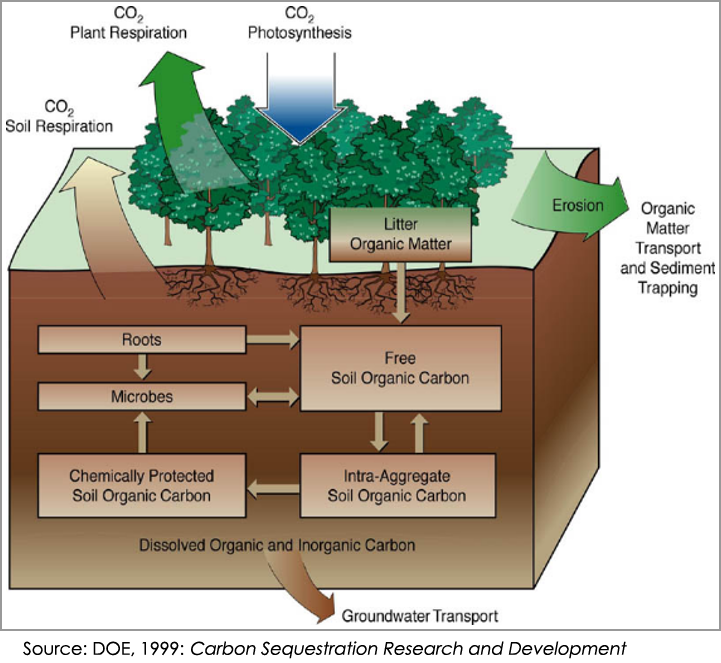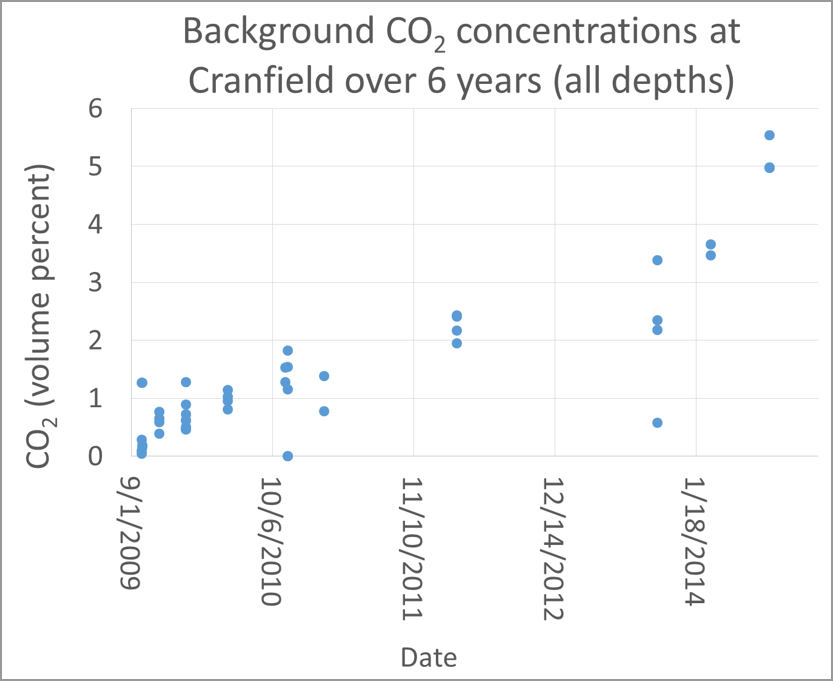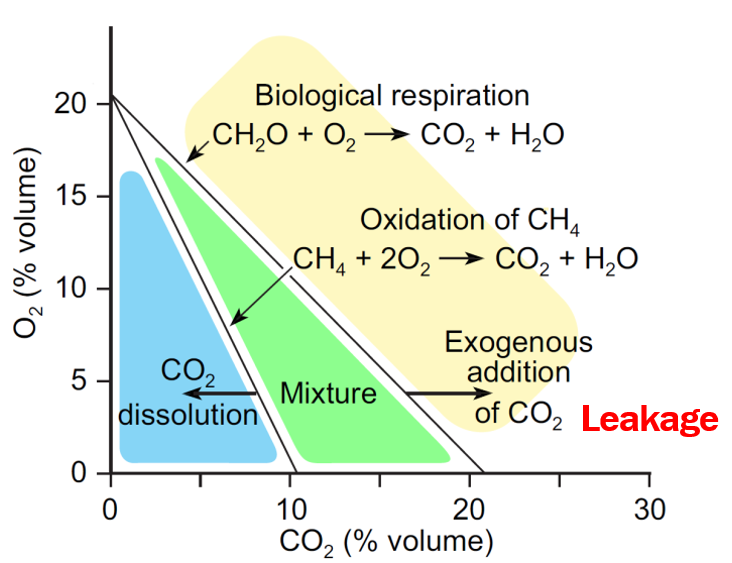Problem statement
Increasing global concern over climate change has brought with it an opportunity for sustainable technological advancement. Tax incentives and the geopolitical will is further driving this trend towards carbon neutral technologies. Carbon capture and storage provides a safe and impactful way of achieving this goal. However, the process comes with practical and regulatory challenges. While a lot of effort is going into making the process cheaper and easier to operate, public opinion and regulatory challenges can only be addressed with efficient monitoring. Monitoring is also required for tax credits to demonstrate permanent storage.
The industry and regulatory bodies have so far depended on establishing baselines carbon dioxide levels before storage and comparing them with post-storage values to determine leaks. However, due to climate change (Fig. 1a) and variable factors effecting generation of natural carbon (Fig. 1b), the baseline is either trending upwards or is inherently unstable. This results in false positives that not only cost time and money to attribute, but also have a negative impact on public opinion. This has been proven at multiple sites including the Cranfield Project in the US, the Weyburn Project in Canada and the Tomakomai Project in Japan. There is therefore an unmet need for robust, baseline independent technologies for monitoring leaks at storage sites.
 |  |
Fig. 1a | Fig. 1b |
Technology description
Dr Katherine Romanak at the University of Texas, Austin has developed a process-based method for determining CO2 leaks. The method does not depend on years of baseline monitoring but instead uses simple gas relationships to identify processes to accurately attribute excess CO2. This characterization requires sensors that monitor CO2, O2, CH4, N2 and the water vapor content at or near the surface. These values can be plugged into an algorithm that links the various gas levels to their sources (Fig. 2). These sources may range from biological respiration, methane oxidation, dissolution and leakage. While depending on measurements of multiple gases (values of which may be determined in real-time with the right equipment), this method does away with the requirement for years of baseline values. It also greatly reduces the possibility of false positives.

Fig. 2
Development
We are currently looking for partners to test this technology in the field. Dr. Katherine Romanak is a leader in this field and greatly interested in partnering and providing technical assistance to industry players that are interested in using carbon capture.

